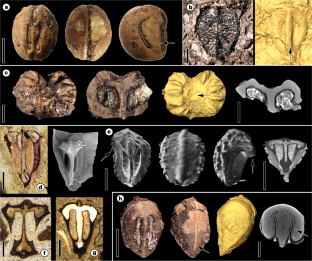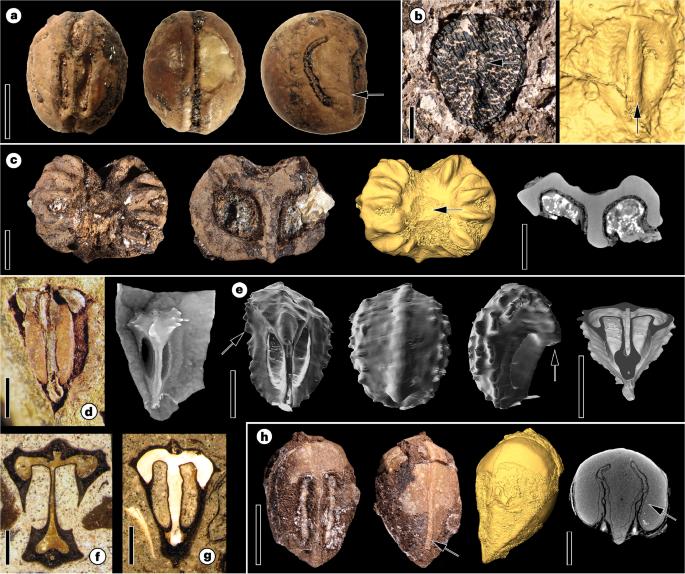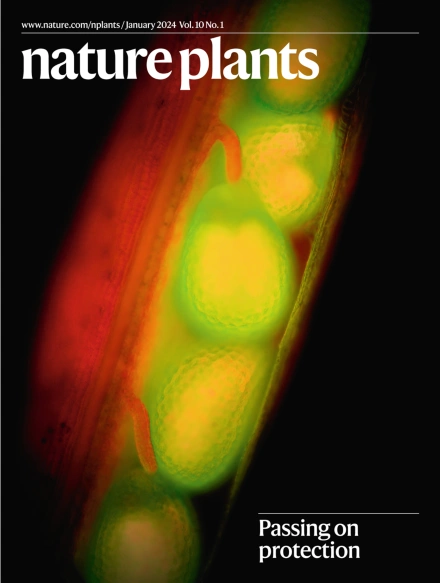新生代葡萄科植物种子揭示了新热带地区物种灭绝和扩散的深刻历史
IF 15.8
1区 生物学
Q1 PLANT SCIENCES
引用次数: 0
摘要
新热带地区的植物群落具有显著的多样性,这是多种生物(如物种分化、灭绝和扩散)和非生物(如气候和构造)过程驱动下多样化的结果。然而,由于缺乏保存完好、取样彻底和经过严格评估的化石记录,人们对相关的扩散和灭绝过程知之甚少。我们报告了一项特殊的案例研究,根据在四个新热带古植物群落中发现的种子化石,记录了葡萄科(Vitaceae Juss.)其中包括一个新物种,它提供了西半球葡萄科最早的证据。另外八个物种揭示了目前在新热带地区不存在的该科主要支系的存在,并阐明了以前未知的扩散事件。我们的研究结果表明,区域性灭绝和扩散对葡萄科植物在新热带地区的进化史产生了重大影响。这些结果还表明,在新生代,新热带地区一直是植物多样化的动态中心,而在过去的6600万年中,现存的新热带植物多样性也受到了大范围物种灭绝的影响。本文章由计算机程序翻译,如有差异,请以英文原文为准。


Cenozoic seeds of Vitaceae reveal a deep history of extinction and dispersal in the Neotropics
The remarkably diverse plant communities of the Neotropics are the result of diversification driven by multiple biotic (for example, speciation, extinction and dispersal) and abiotic (for example, climatic and tectonic) processes. However, in the absence of a well-preserved, thoroughly sampled and critically assessed fossil record, the associated processes of dispersal and extinction are poorly understood. We report an exceptional case study documenting patterns of extinction in the grape family (Vitaceae Juss.) on the basis of fossil seeds discovered in four Neotropical palaeofloras dated between 60 and 19 Ma. These include a new species that provides the earliest evidence of Vitaceae in the Western Hemisphere. Eight additional species reveal the former presence of major clades of the family that are currently absent from the Neotropics and elucidate previously unknown dispersal events. Our results indicate that regional extinction and dispersal have substantially impacted the evolutionary history of Vitaceae in the Neotropics. They also suggest that while the Neotropics have been dynamic centres of diversification through the Cenozoic, extant Neotropical botanical diversity has also been shaped by extensive extinction over the past 66 million years. Fossil seeds (60 to 20 million years old) from Colombia, Panama and Perú show previously unrecognized patterns of diversity and local extinctions of grapes in the New World. These also support a tentative origin of Vitis in the New World.
求助全文
通过发布文献求助,成功后即可免费获取论文全文。
去求助
来源期刊

Nature Plants
PLANT SCIENCES-
CiteScore
25.30
自引率
2.20%
发文量
196
期刊介绍:
Nature Plants is an online-only, monthly journal publishing the best research on plants — from their evolution, development, metabolism and environmental interactions to their societal significance.
 求助内容:
求助内容: 应助结果提醒方式:
应助结果提醒方式:


